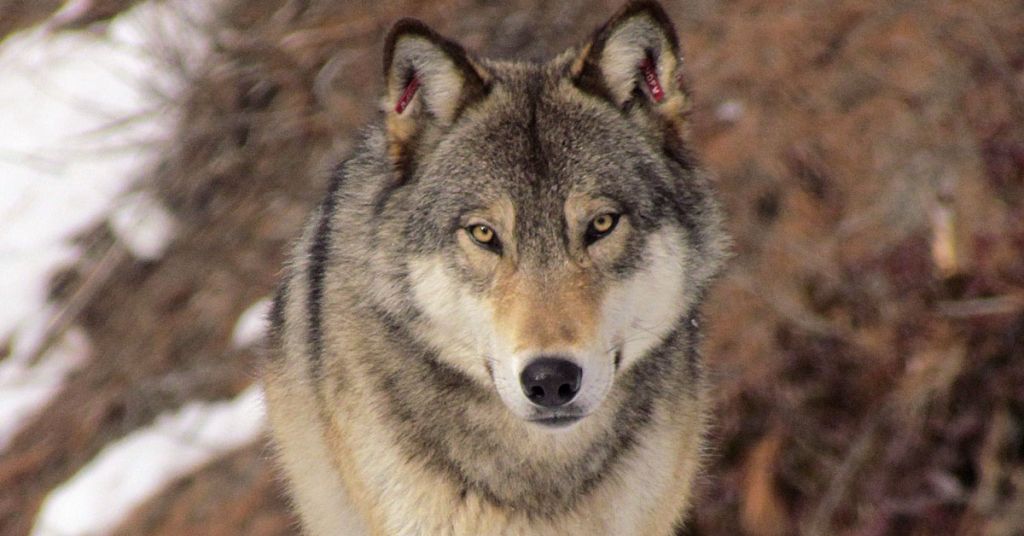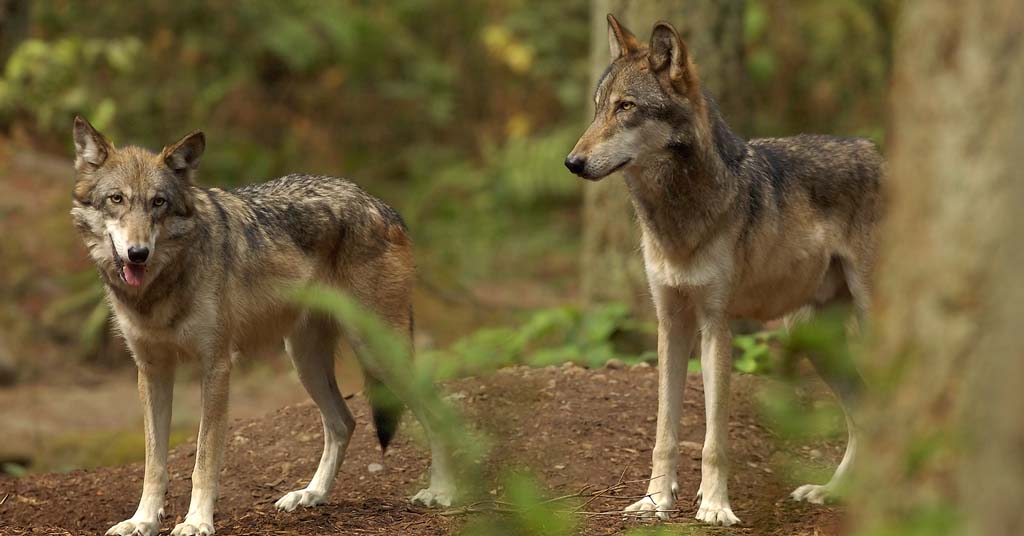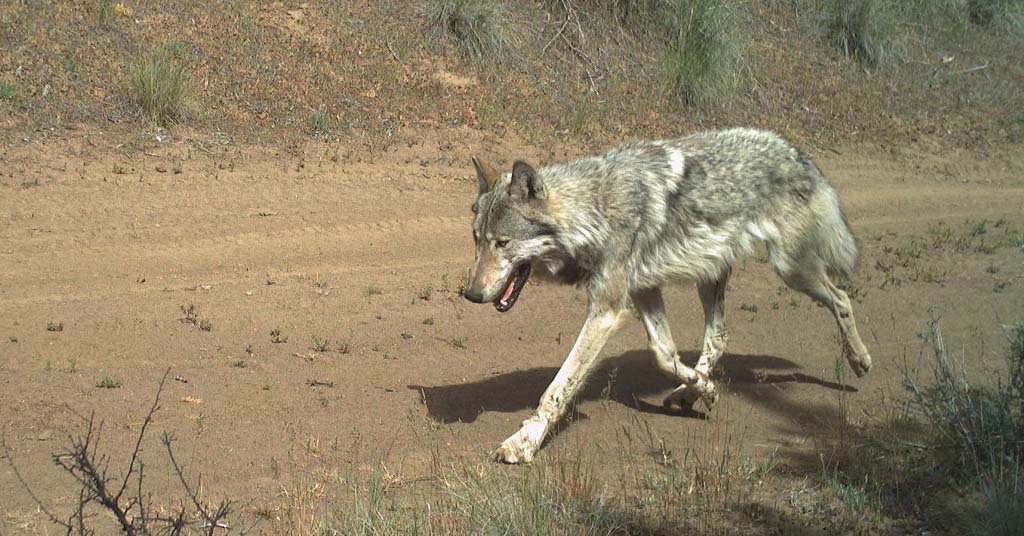New stats suggest healthy wolf population and successful management, but rural residents remain apprehensive of wild carnivores

Mo’ better blues: Wolves like this young female wolf (tagged by wildlife biologists in Washington’s Teanaway Valley) are thriving. Not everyone is happy. Photo: Craig Monette
By Eli Francovich, April 18, 2022. Washington’s wolf population grew for the 13th consecutive year in 2021, despite the confirmed death of 30 wolves.
That’s good news for wolves as some nearby states—notably Idaho and Montana—have ramped up wolf hunting and trapping with the stated goal of reducing wolf populations.
In Washington, state and tribal biologists documented a minimum of 206 wolves in 33 packs throughout in 2021, according to a report released by the Washington Department of Fish and Wildlife on April 9.
The state documented the lowest number of wolf attacks on livestock since 2017, said Julia Smith, Washington’s wolf policy lead. The state killed two wolves in response to those attacks, the lowest number since 2015, she said.
“I’m thrilled to witness continued growth and expansion of Washington’s wolf population,” she said.
In addition to the two wolves killed by the state, 22 wolves were legally killed by tribal hunters, four were hit and killed by vehicles and two deaths are still being investigated.
Significance of borders
Most of Washington’s packs live in the eastern-third of the state, which, per the state’s recovery goals, means that wolves won’t be delisted at the state level.
To be delisted by the state, breeding pairs of wolves must be present in four distinct geographic areas of the state.
Not delisting wolves has frustrated some in rural Washington who feel they’re bearing all the burden of living alongside wild carnivores.
MORE: Has this Washington man figured out the key to wolf management?
Meanwhile, wolf activists warn that, while Washington’s population is growing, larger populations in Idaho and Montana, which bolster Washington’s population via natural dispersion, are under attack.
“Thankfully Washington isn’t making the lethal mistakes that we’re seeing in the Northern Rockies,” said Sophia Resssler, an attorney at the Center for Biological Diversity in a statement. “With the unbridled wolf slaughter occurring just east of us, the need for strong rules that work to lessen conflict is more vital now than ever.”
Wolves in the western two-thirds of Washington are on the federal endangered species list. Wolves in the eastern-third of the state are not federally protected.
Idaho has about 1,500 wolves while Oregon counted about 170 wolves in 2020.










